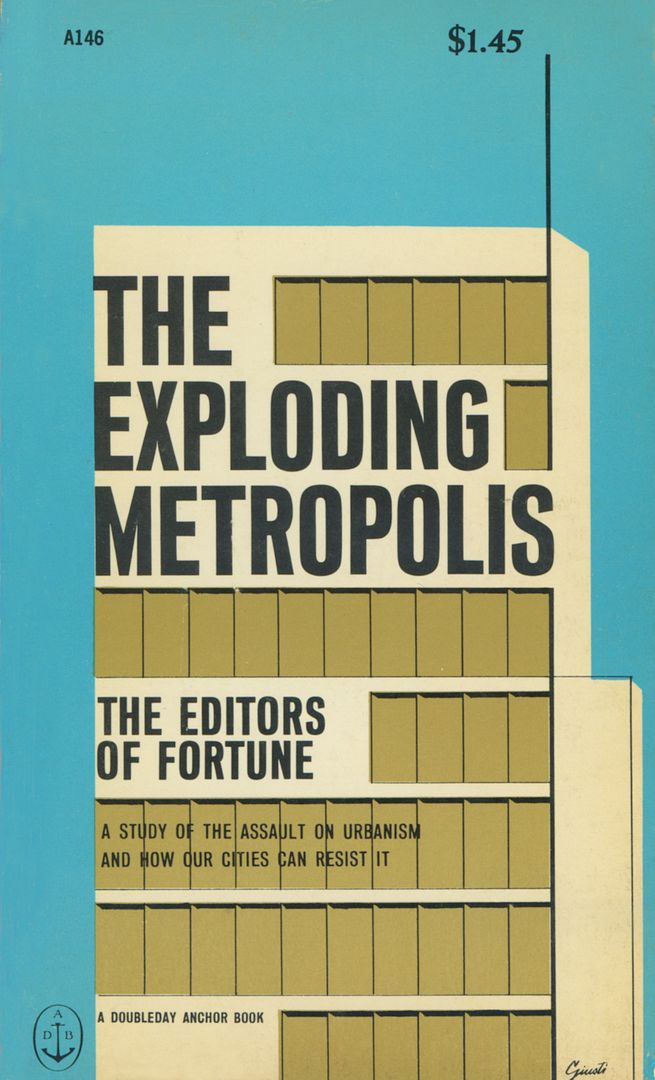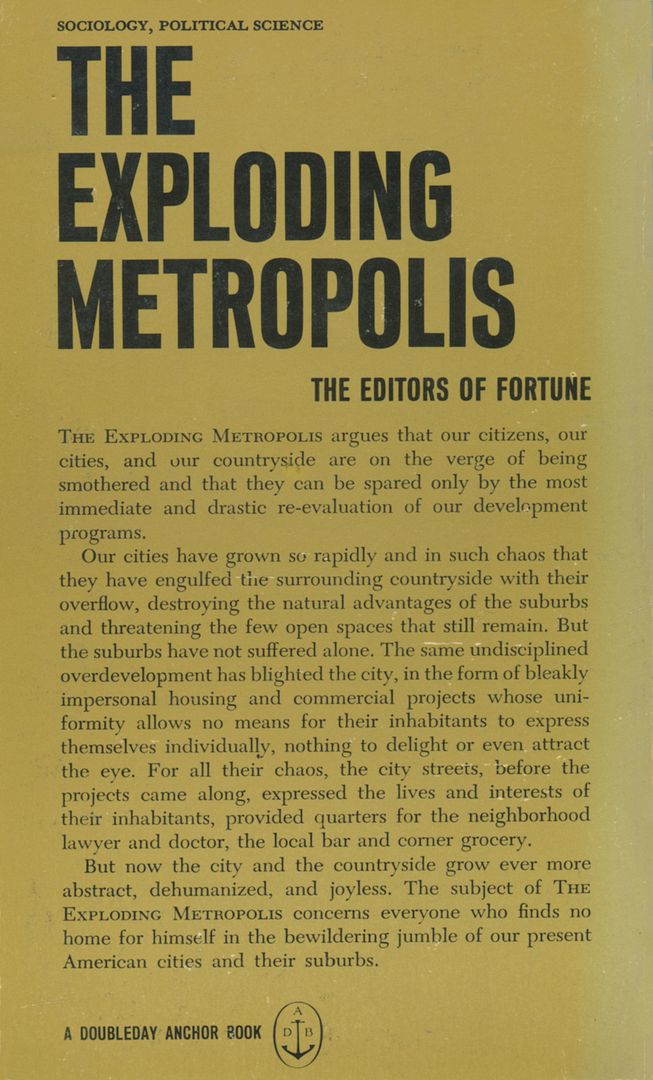 I'm blogging and reviewing the original © 1958 that has been in my library close to forever but I'm posting my review with the 1993 revision.
I'm blogging and reviewing the original © 1958 that has been in my library close to forever but I'm posting my review with the 1993 revision. A group of "Editors of Fortune" magazine at the time, William H. Whyte, Jane Jacobs, Francis Bello, Seymour Freedgood, and Daniel Seligman considered essential elements of urban design and pondered their effects on city dwellers and urban workers. The book's working definition of city simply is the area within the city limits (viii); almost needless to say, "metropolis" indicates the functional and statistical area or areas geographically beyond yet contiguous to the named incorporated entity.
Exploding sounds like unanticipated, sudden, randomness; if the authors knew they'd seen a lot of that from the mid-20th century up to the time they put this book together, they hadn't seen anything yet, though each of them accurately describes the unexpected, often distressingly unattractive results of urban growth and sprawl—even in some cases of planned change and development. In terms of explosive, the schematic "classic case of sprawl" (on page 119) in Santa Clara County, California from 1945 to 1956 is instructive.
Chapter topics of Are Cities Un-American?; The City and the Car; New Strength in City Hall; The Enduring Slums; Urban Sprawl; and Downtown Is for People add up to Urban Studies 101 as the authors explore existing infrastructural and superstructural configurations in a dozen established USA population centers (along with a couple of references to Toronto, Ontario, Canada), assess ideas in progress and process, and propose future arrangements that might work in terms of "how to live in cities," the central thesis of The Exploding Metropolis.
 This book now is more than a half-century old, but ever since humans began moving from hunter-gathering into settlements, they've had to figure out the best relationships between living space and working space and the most convenient ways to get back and forth from one to the other; planning and implementing the most pleasing, amenable, visual layouts alongside the practical became close to essential.
This book now is more than a half-century old, but ever since humans began moving from hunter-gathering into settlements, they've had to figure out the best relationships between living space and working space and the most convenient ways to get back and forth from one to the other; planning and implementing the most pleasing, amenable, visual layouts alongside the practical became close to essential. Jane Jacobs especially emphasizes "working streets," and advises us to walk, walk, walk, in order to feel and learn how the city all comes together.
Whether discussing clearing and developing land, rehabilitating and rebuilding on an existing site, different styles of city government, housing authorities, port authorities, water works or watersheds, every one of the contributors comes back to human scale and human functionality again and again, making The Exploding Metropolis both basic and classic.
my amazon review: Urban Studies 101
No comments:
Post a Comment